Maiolica tiles in the Lando Chapel in San Sebastiano church
Ceramics produced in Venice in the ancient times was invisible heritage until a few weeks ago, when finally! the Lando Chapel floor in the church of San Sebastiano was brought back to where it was removed over thirty years ago.
Beautifully restored by Save Venice, the floor consists of 384 tiles in maiolica. The one in the centre is quite large and shows the Lando family’s crest.
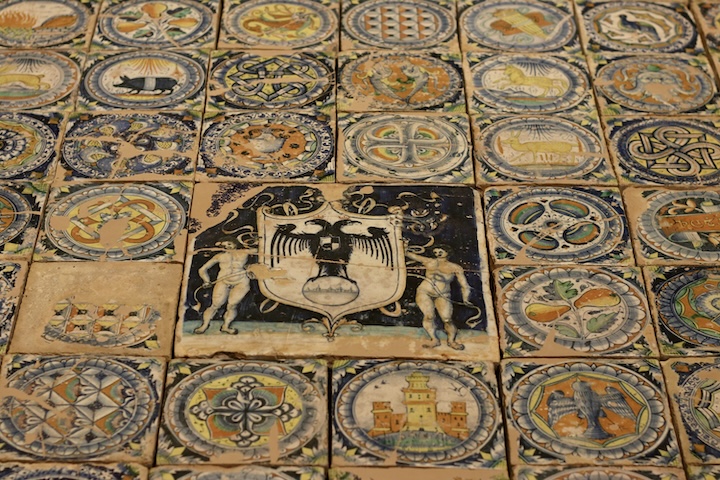
Coat of arms of the family Lando as part of the floor in ceramics at the family chapel in the church of San Sebastiano, Venice, 1531-1542
The chapel is dedicated to the Assumption of the Virgin Mary. It lies to the left of the main altar next to Paolo Veronese’s tomb. It was acquired by the family of Marco Lando in 1531, the grandson of Girolamo, patriarch of Constantinople. The family chapel, where more members of the family were buried, was handed to the Vitturi family in 1542. This seems to prove the 384 maiolica tiles were laid here in those years. But this is all we know about them.
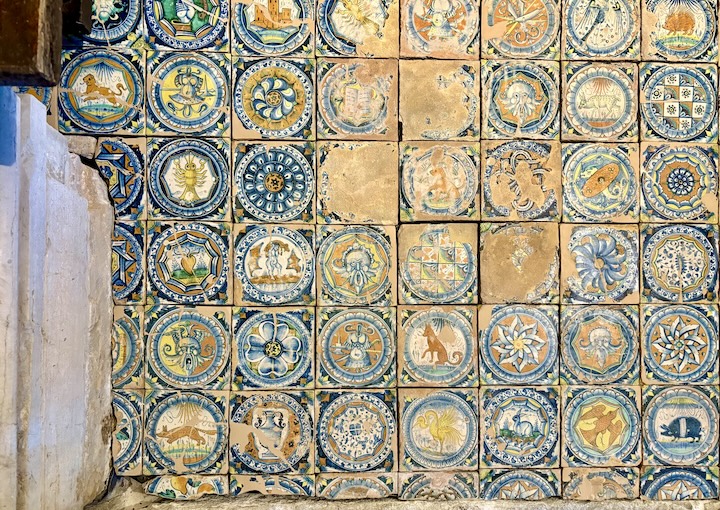
Details of the floor in ceramics at the Lando Chapel in the church of San Sebastiano, Venice, 1531-1542
Indeed the floor is still an enigmatic presence in Venice.
What we do not know about ceramics tiles in the Lando Chapel
We don’t know in which occasion the tiles were made. Maybe some wedding, as there are some tiles showing motifs linked to marriage and love. We don’t know who made them. Some historians think they are connected to other ceramics centers in Italy, such as Faenza, in Romagna, or Pesaro, in the Marche region. But why are they in Venice? Maybe they were made in Venice by craftsmen who migrated here. And maybe, not just one atelier, but several.
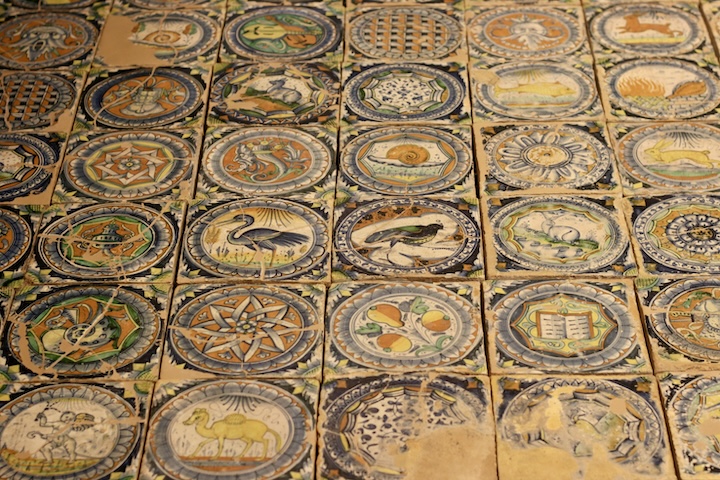
Details of the floor in ceramics at the Lando Chapel in the church of San Sebastiano, Venice, 1531-1542
Maybe this floor was not even thought for this chapel, but it was designed for another space.
The mystery surrounding this colorful floor adds beauty to it. You can lean and observe the different motifs. Animals and birds, both fantastic and realistic, grotesque figures, geometric elements, flowers and fruits, human figures, inscriptions will hook your attention and you won’t leave quickly.
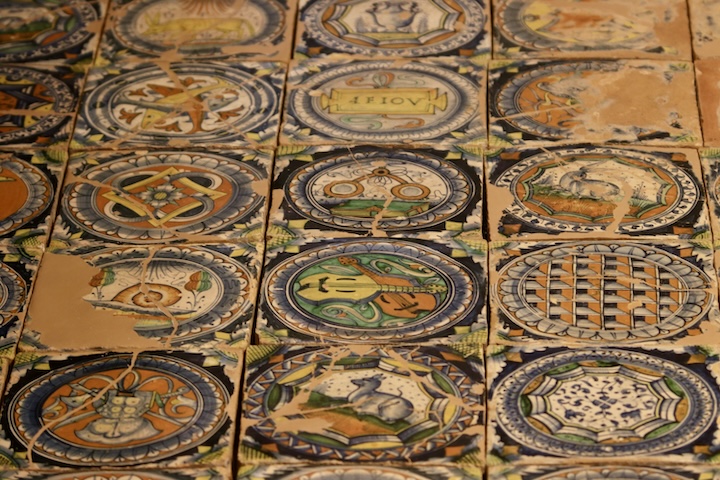
Details of the floor in ceramics at the Lando Chapel in the church of San Sebastiano, Venice, 1531-1542
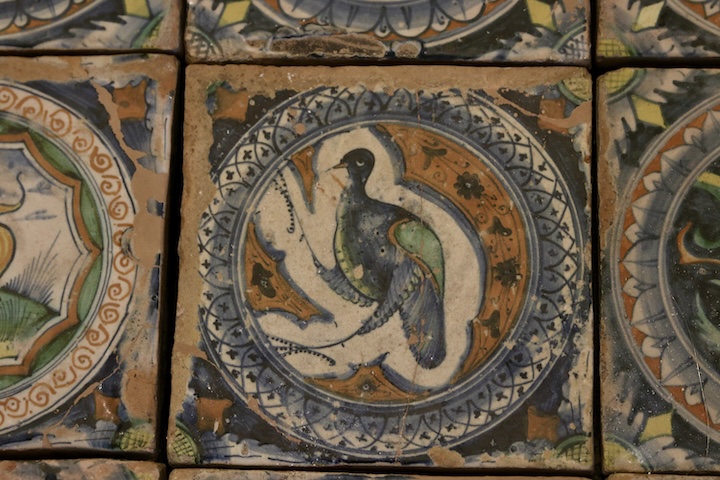
Bird tiles part of the floor in ceramics at the Lando Chapel in the church of San Sebastiano, Venice, 1531-1542
Francesca Saccardo’s research on ceramic in ancient Venice
The intriguing aspect of this floor is that unlike glass, the history of ceramics production in ancient Venice is not too well known. Francesca Saccardo has just published a very detailed book on the subject, retracing history, motifs, research directions.
Saccardo also founded in 2003 the association of Venetian ceramics craft, “I Bochaleri”, whose headquarters are in Castello near Via Garibaldi. She worked at the Ca’ d’oro museum from 1986 until 2019. In this museum 14,000 ceramic fragments are preserved (and alas, not on show), ranging from the 12th until the 18th century.
While reading Saccardo’s book, it came to my mind that when I was still a child, my neighbor used to collect ceramics pieces he had found in the salt marshes of the lagoon. The collection ended in the Ca’ d’oro museum, aka Giorgio Franchetti Gallery, as many others, starting in 1978 when the museum acquired Luigi Conton’s collection. Also Ernesto Canal, the archeologist revealing the Roman origins of the Venetian lagoon first settlements, contributed to the Ca’ d’oro museum.
Where archeologists found remains of ceramic in ancient Venice
The point regarding ceramics production in ancient Venice is in fact where you can find the pieces. Most of them are in the lagoon islands, such as San Giacomo in Paludo, but especially San Lorenzo di Ammiana, near Torcello. Under the mud, under the water, there lies a true treasure. Venetian ceramics fragments are also present near the Brenta river in Fusina. It often happened that while digging to create a septic tank in some palace in Venice, you discover ceramics. But also wherever Venetians needed to reenforce embankments, they used, as construction materials, ceramics. Also ships which wrecked in the Adriatic Sea have revealed ceramics.
A short outline of the history of ceramics production in ancient Venice
It is hard to outline a history of ceramics production in ancient Venice starting from this fragmented and dispersed map.
So far we know the guild existed in 1301 already and that ceramists would pray at the guild’s altar in the Frari church, dedicated to the Archangel Michael.
The production of maiolica was really important, but then it decayed in the early 15th century when Spanish iridescent pottery was preferred. Ceramic art from Spain could be admired in Sant’Elena church in Castello. This happened maybe because the quality of Venetian clay was lower and it cost too much to enamel it.
Not just Spanish ceramists. It is in the late 15th century when the most celebrated Tuscan ceramists Della Robbia came to Venice to decorate the chapel in the church of San Giobbe for the Martini family, silk merchants from Lucca.
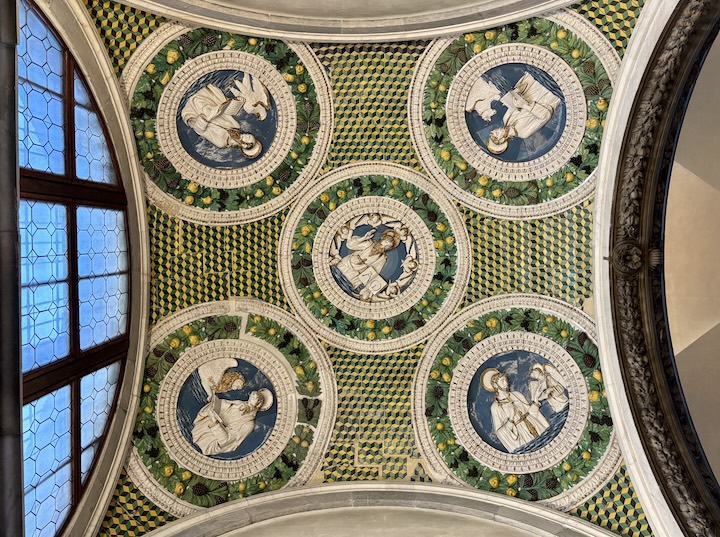
Della Robbia ceramics decorating the vault of the Martini Chapel in the church of San Giobbe with images of God the Father and the Four Evangelists, Venice, 1475
But in the 16th century it was the turn of foreign craftsmen to migrate to Venice from Emilia Romagna or Marche, where life had become difficult, and Venetian ceramic workshops flourished again. In Campiello degli Squellini near Ca’ Foscari there was a very active furnace and German merchants started acquiring maiolica banquet sets to bring to Augsburg and Nurnberg.
Alchemy and ceramics
No, it was not easy. It was pure alchemy, the outcome could be unpredictable. Around 1559 in Venice Cavalier Cipriano Piccolpasso wrote “Li tre libri dell’arte del vasaio” (the three books of the art of the vase maker). Piccolpasso described all possible technical details. In the end, though, when the moment to fire the pottery in the oven arrived, he recommended to say a prayer, thank God and make sure the moon was shining:
Fatto tutto questo, porgonsi preghi a Dio con tutto il core, ringratiandolo sempre di tutto ciò ch’egli ci dà. Pigliasi del fuoco, havertendo però al far della luna, perché questo è di grandissima importanza, et ho inteso da quegli che son vechi ne l’arte e di qualche esperienza che, cogliendosi havere il fuoco sul combusto della luna, manca la chiareza del fuoco in quel modo che manca il splendore a essa
When porcelain thrived in the 18th century, Venetian pottery lost its appeal to disappear completely in 1804 and the memory of this art got lost. Nowadays fortunately in Venice there are many workshops and the production is really varied. Porcelain is also beautifully created. While touring with me in Venice, I will be happy to show you the creations by Venice-based talented artisans.
by Luisella Romeo
registered tourist guide in Venice, Italy
www.seevenice.it
More info on the restoration of the Lando Chapel in the church of San Sebastiano, Venice:
https://www.savevenice.org/project/majolica-tile-floor-in-the-lando-annunciation-chapel-of-the-church-of-san-sebastiano



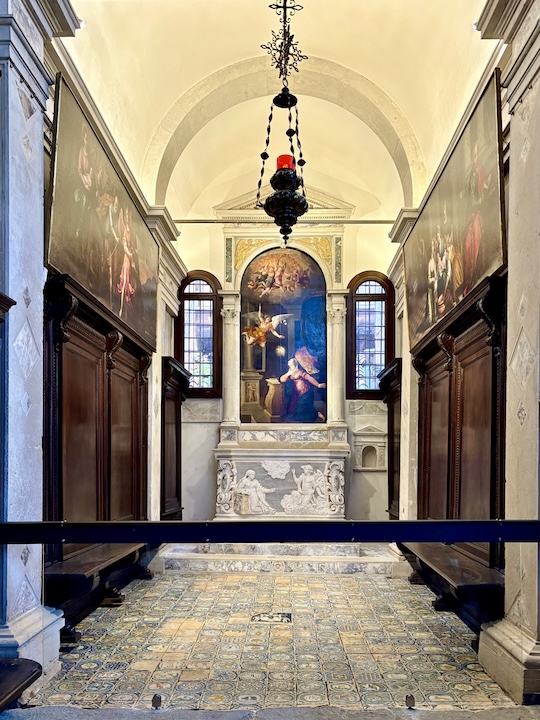
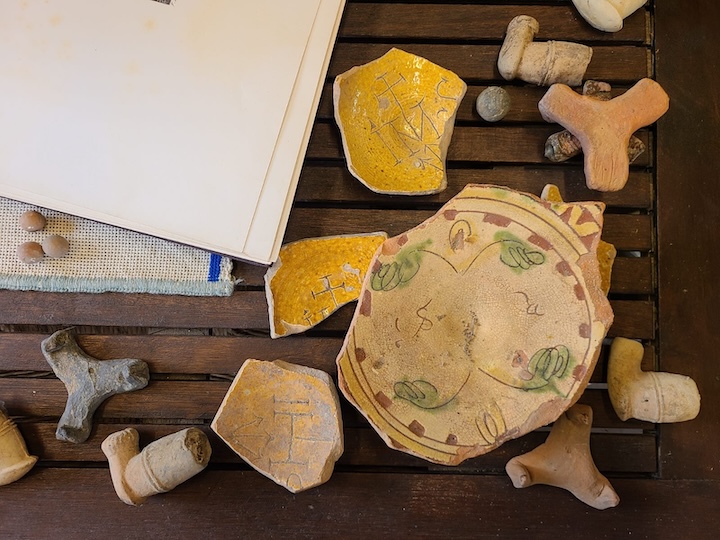
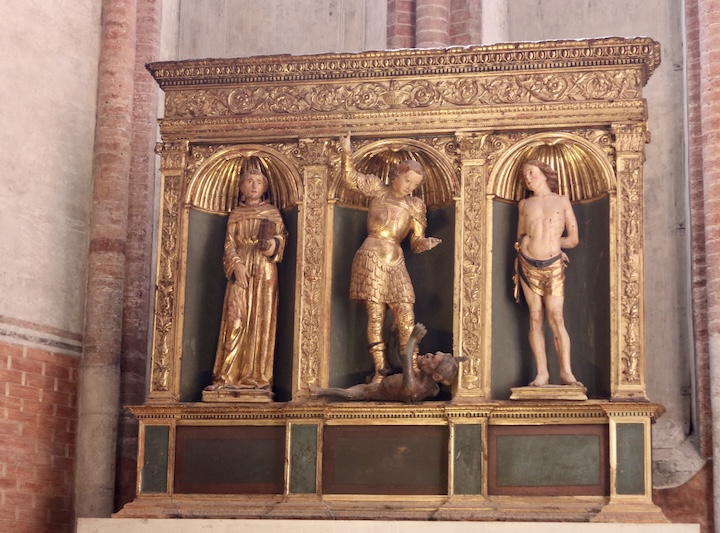
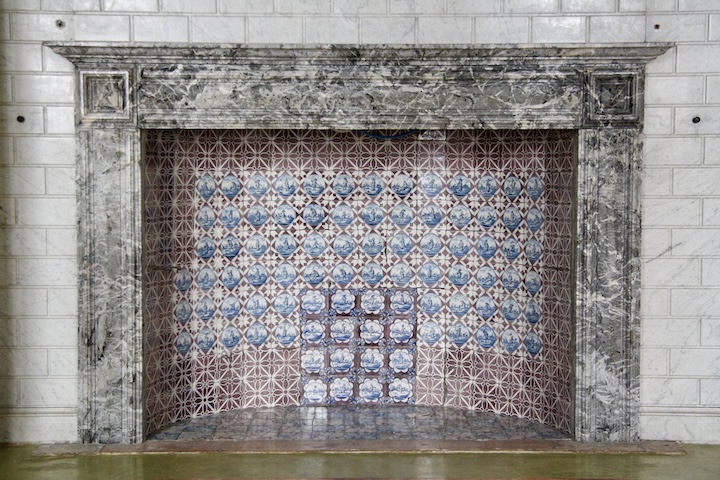

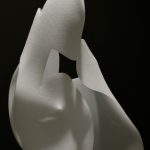
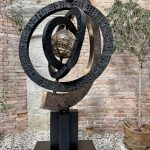


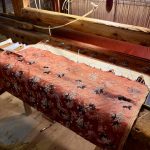
Very interesting. Did the restoration of the Lando Chapel ceramics take 30 years or were they removed long before any restoration was started? Hoping to see them some day.
Grazie! Save Venice writes: The tiles were removed from the Lando Chapel in 1993 for conservation studies and, following a brief exhibition at the Galleria Giorgio Franchetti at Ca’ d’Oro in 2002, were placed in storage. In November 2019, they were entrusted to the Mauve conservation lab for cataloging and further analysis. The 384 tiles were meticulously restored by Mauve Srl between 2019 and 2024.”